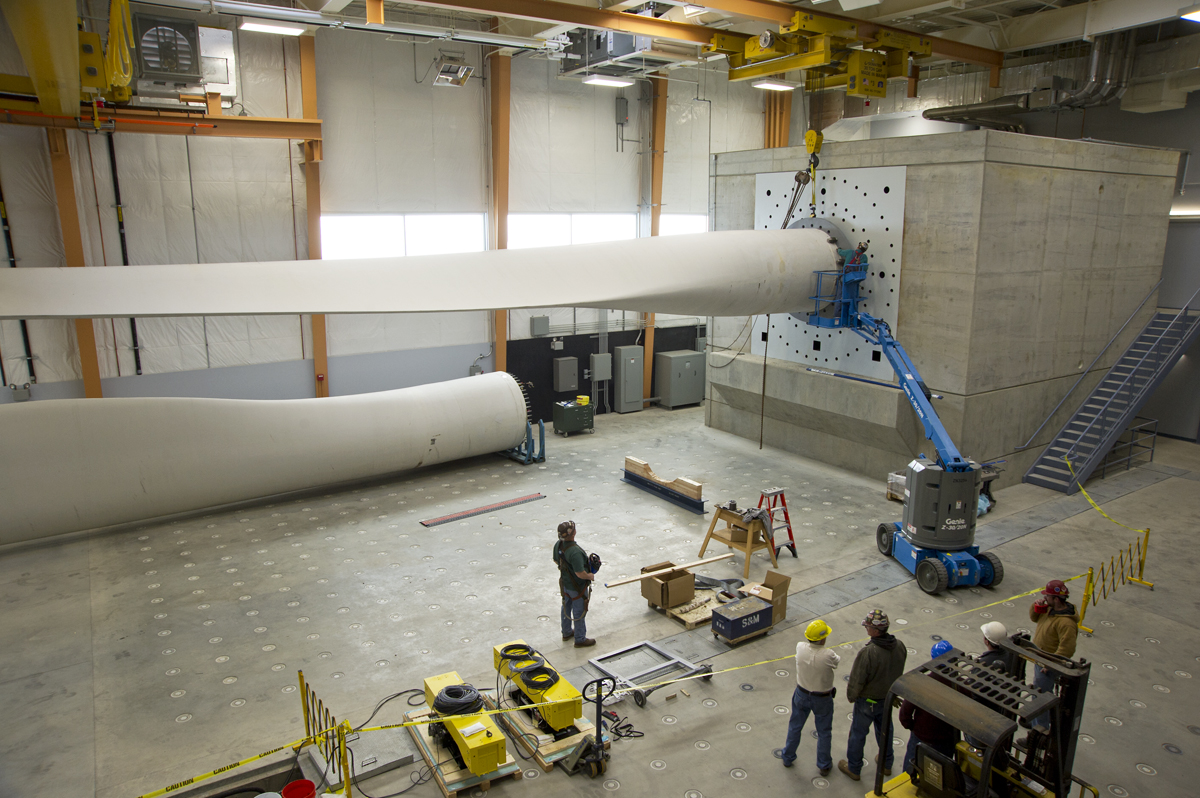
Offshore Wind Lab awarded LEED Gold
The U.S. Green Building Council has awarded the University of Maine’s Advanced Structures and Composites Center the LEED Gold certification for its newly constructed Offshore Wind Laboratory. This is the first LEED Gold-certified building on the UMaine campus.
“This reflects our steadfast commitment to sustainable development as we continue to grow an offshore wind industry in Maine,” said Habib Dagher, the Advanced Structures and Composites Center’s director.
LEED certification was established by the U.S. Green Building Council and verified by the Green Building Certification Institute. LEED is the nation’s preeminent program for the design, construction and operation of high-performance green buildings.
“The Offshore Wind Laboratory’s LEED certification demonstrates tremendous green building leadership,” said Rick Fedrizzi, president, CEO and founding chair of the U.S. Green Building Council. “The urgency of USGBC’s mission has challenged the industry to move faster and reach further than ever before, and the Offshore Wind Laboratory serves as a prime example with just how much we can accomplish.”
The laboratory achieved LEED certification for reductions in energy, water and material use compared to traditional buildings, as well as for its incorporation of natural lighting and other sustainable features. By using less energy and water in construction and operation, LEED certified buildings save money for families, businesses and taxpayers; reduce greenhouse gas emissions; and contribute to a healthier environment for residents, workers and the larger community.
The Offshore Wind Laboratory is the only facility in the country with the capability to design and manufacture full-scale wind turbine structural components, floating foundations, ship hulls and to test these components under one roof. During construction, the laboratory created more than 250 full- and part-time jobs.
The Washington, D.C.-based U.S. Green Building Council is committed to a prosperous and sustainable future for our nation through cost-efficient and energy-saving green buildings.
With a community comprising 80 local affiliates, more than 18,000 member companies and organizations, and more than 167,000 LEED Professional Credential holders, USGBC is the driving force of an industry that is projected to contribute $554 billion to the U.S. gross domestic product from 2009-2013. USGBC leads an unlikely diverse constituency of builders and environmentalists, corporations and nonprofit organizations, elected officials and concerned citizens, and teachers and students.
Buildings in the United States are responsible for 39% of CO2 emissions, 40% of energy consumption, 13% water consumption and 15% of GDP per year, making green building a source of significant economic and environmental opportunity. Greater building efficiency can meet 85% of future U.S. demand for energy, and a national commitment to green building has the potential to generate 2.5 million American jobs.
The U.S. Green Building Council’s LEED green building certification system is the foremost program for the design, construction and operation of green buildings. Over 100,000 projects are currently participating in the LEED rating systems, comprising over 8 billion square feet of construction space in all 50 states and 114 countries.
USGBC was co-founded by Fedrizzi, who spent 25 years as a Fortune 500 executive. Under his 15-year leadership, the organization has become the preeminent green building, membership, policy, standards, influential, education and research organization in the nation.
For more information, visit www.usgbc.org.
